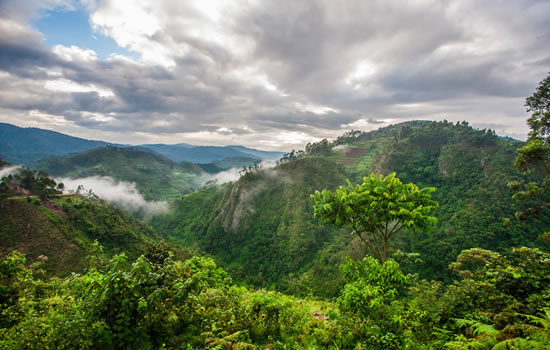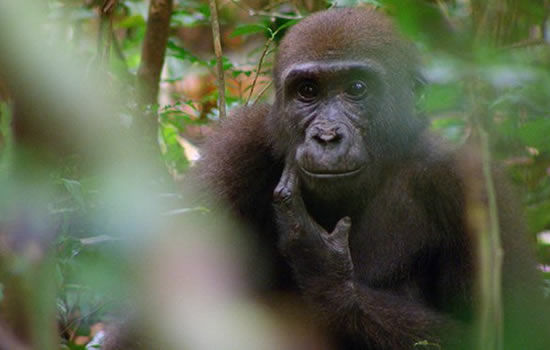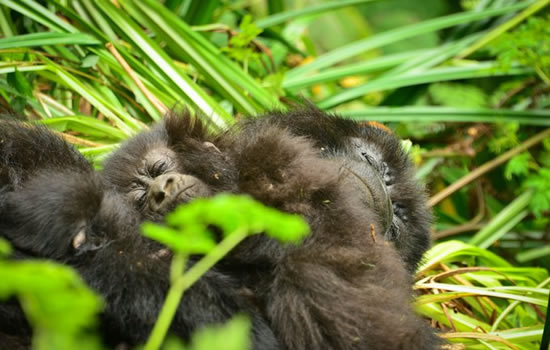Where to see Gorillas in Africa – Gorilla Trekking.
Planning a gorilla trekking experience in Africa but worried where to go gorilla trekking or the best places to see the gorillas in the wild while on an Africa Safari. The team of gorilla Trekking that has been tailoring gorilla safaris to Uganda, Rwanda and democratic republic of Africa has decided to guide you during gorilla trekking planning journey to gorilla adventure with them.
Gorilla Trekking Experiences with us
Experiencing the majesty of gorillas in their natural habitat is a unique and profound adventure that draws wildlife enthusiasts from around the globe to Africa. Home to the planet’s remaining gorilla populations, Africa offers several prime destinations where visitors can embark on unforgettable treks to observe these magnificent Primates.
From the lush, impenetrable forests of Uganda and the scenic volcanic landscapes of Rwanda to the remote, dense rainforests of the Democratic Republic of Congo and the Republic of Congo, each region presents a distinct opportunity to witness gorillas up close.
Types of Gorillas in Africa- Gorilla Trekking
Gorillas are the largest of the great apes and are divided into two species: the eastern gorilla and the western gorilla. Each of these species has two subspecies. Here’s a brief overview of each type of gorilla:
Mountain Gorillas
Location: Mountain gorillas are found in the high-altitude forests of the Virunga Mountains, which span the borders of Uganda, Rwanda, and the Democratic Republic of Congo (DRC), as well as in Uganda’s Bwindi Impenetrable National Park.
Physical Characteristics:
- Appearance: They have longer, thicker fur compared to other gorilla subspecies, which helps them survive in colder mountainous climates.
- Size: Adult males, known as silverbacks, can weigh up to 220 kg (484 lbs) and stand about 1.7 meters (5.5 feet) tall.
Eastern Lowland Gorillas (Grauer’s Gorillas)
Location: Eastern lowland gorillas are found in the lowland tropical forests of eastern DRC, primarily within the Kahuzi-Biega National Park.
Physical Characteristics:
- Appearance: They have a stockier build, shorter limbs, and shorter fur compared to mountain gorillas.
- Size: They are the largest of all gorilla subspecies. Males can weigh up to 250 kg (551 lbs) and can be over 1.8 meters (6 feet) tall when standing.
Western Lowland Gorillas
Location: Western lowland gorillas inhabit the dense and remote tropical forests of West and Central Africa, including countries like Cameroon, Central African Republic, Republic of Congo, Gabon, and Equatorial Guinea.
Physical Characteristics:
- Appearance: They have a reddish-brown forehead and a relatively shorter, finer coat compared to mountain gorillas.
- Size: Males typically weigh around 160 kg (352 lbs) and stand about 1.6 meters (5.2 feet) tall.
Cross River Gorillas
Location: Cross River gorillas are found in a small area along the border between Nigeria and Cameroon, primarily within the Cross River region.
Physical Characteristics:
- Appearance: They are similar in appearance to western lowland gorillas but have subtle differences in skull and tooth dimensions.
- Size: Similar in size to western lowland gorillas, though slightly more robust.
Gorilla trekking is available in a few select African countries, each offering a unique experience.
UGANDA
- Bwindi Impenetrable National Park
 Location and Description: Bwindi Impenetrable National Park is located in southwestern Uganda, bordering the Democratic Republic of Congo (DRC) and the Virunga National Park. The park spans 331 square kilometres of montane and lowland forest and is a UNESCO World Heritage Site. Bwindi is renowned for its biodiversity, including over 400 plant species, 120 mammal species, and, most notably, nearly half of the world’s population of mountain gorillas.
Location and Description: Bwindi Impenetrable National Park is located in southwestern Uganda, bordering the Democratic Republic of Congo (DRC) and the Virunga National Park. The park spans 331 square kilometres of montane and lowland forest and is a UNESCO World Heritage Site. Bwindi is renowned for its biodiversity, including over 400 plant species, 120 mammal species, and, most notably, nearly half of the world’s population of mountain gorillas.
Gorilla Groups: Bwindi has several habituated gorilla groups spread across its four main sectors: Buhoma, Ruhija, Rushaga, and Nkuringo. Each group offers a different trekking experience due to the varying terrain and vegetation.
Trekking Experience: Trekking in Bwindi can be challenging due to the steep and densely forested terrain. Treks can last from a few hours to a full day, depending on the location of the gorillas. The experience involves navigating through thick jungle, often with the help of machetes to clear paths. Despite the physical demands, the reward of encountering a gorilla family in their natural habitat is incomparable. Trekkers are usually allowed to spend one hour with the gorillas.
Additional Activities: Apart from gorilla trekking, Bwindi offers bird watching, with over 350 bird species recorded. Hiking trails such as the Munyaga River trail and the Waterfall trail provide additional adventure. Cultural experiences with the Batwa pygmies, the indigenous people of the forest, are also available, offering insights into their traditional way of life.
- Mgahinga Gorilla National Park
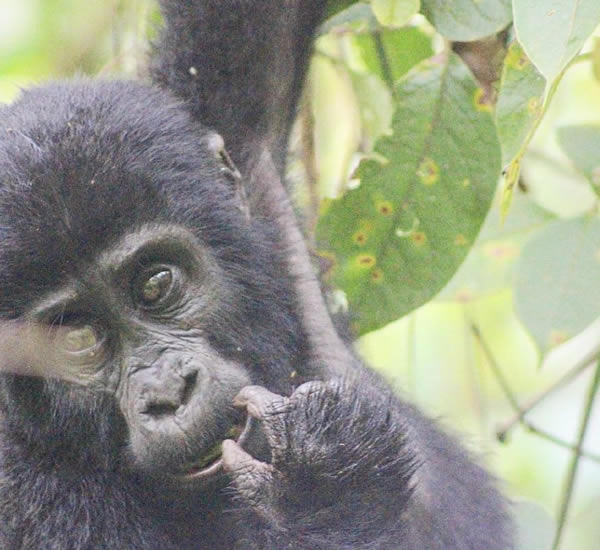 Location and Description: Mgahinga Gorilla National Park is located in the Virunga Mountains in southwestern Uganda. It is part of the larger Virunga Conservation Area that straddles the borders of Uganda, Rwanda, and the DRC. The park covers 33.7 square kilometres and is characterized by its volcanic landscapes.
Location and Description: Mgahinga Gorilla National Park is located in the Virunga Mountains in southwestern Uganda. It is part of the larger Virunga Conservation Area that straddles the borders of Uganda, Rwanda, and the DRC. The park covers 33.7 square kilometres and is characterized by its volcanic landscapes.
Gorilla Groups: Mgahinga is home to the Nyakagezi gorilla group, which is known for its nomadic tendencies, sometimes crossing borders into Rwanda and the DRC.
Trekking Experience: Trekking in Mgahinga can be less crowded than in Bwindi, offering a more intimate experience. The terrain includes volcanic slopes, bamboo forests, and montane vegetation. The treks are less strenuous compared to Bwindi, but the volcanic landscape adds a unique aspect to the adventure.
Additional Activities: Mgahinga offers golden monkey tracking, a unique opportunity to see these endangered primates. Hikes to the peaks of the Virunga volcanoes, such as Mount Sabyinyo, Mount Gahinga, and Mount Muhabura, provide spectacular views. The Batwa Trail, led by Batwa guides, allows visitors to learn about the Batwa pygmies’ culture and their historical connection to the forest.
RWANDA
- Volcanoes National Park
Location and Description: Volcanoes National Park is located in the northwest of Rwanda and is part of the Virunga Mountains. The park covers 160 square kilometers and is one of the most famous gorilla trekking destinations in the world. It was the base for Dian Fossey’s groundbreaking gorilla research, which brought global attention to the plight of mountain gorillas.
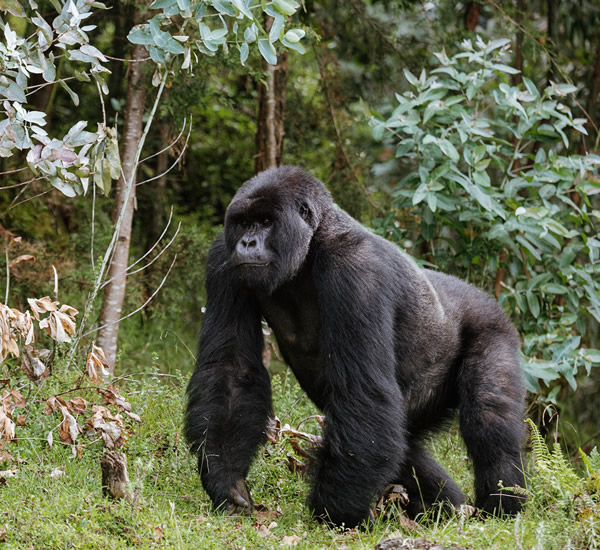 Gorilla Groups: Several habituated gorilla groups are available for trekking, including the Susa group, which was studied by Dian Fossey, and other groups such as Amahoro, Kwitonda, and Hirwa.
Gorilla Groups: Several habituated gorilla groups are available for trekking, including the Susa group, which was studied by Dian Fossey, and other groups such as Amahoro, Kwitonda, and Hirwa.
Trekking Experience: The trekking experience in Volcanoes National Park is well-organized, and the trails are generally more accessible than those in Bwindi. However, the high altitude can make the trek challenging. Treks can vary in length, from a couple of hours to most of the day, depending on the gorillas’ location. The park’s lush vegetation and scenic beauty add to the overall experience.
Additional Activities: Besides gorilla trekking, Volcanoes National Park offers golden monkey tracking, hiking to Dian Fossey’s research camp and grave, and climbing volcanoes like Mount Karisimbi and Mount Bisoke. The Musanze Caves and visits to the local communities provide further enrichment.
3 DAYS BWINDI GORILLAS
This 3 Days (2 Nights) Uganda Gorilla Trek is the shortest possible safari to see Uganda’s Bwindi Gorillas starting in Kampala or Entebbe.
3 DAYS CONGO LOWLAND GORILLAS
A 3 Days (2 Nights) Gorilla Safari to Kahuzi Biega National park, the only place to see Eastern lowland gorillas in their natural habitat.
5 DAYS GORILLAS & CHIMPS
A 5 Days Uganda Primate Safari takes you to both Bwindi Impenetrable Forest and Kibale National Park to meet the great apes.
DEMOCRATIC REPUBLIC OF CONGO (DRC)
- Virunga National Park
Location and Description: Virunga National Park, located in the eastern DRC, is Africa’s oldest national park and a UNESCO World Heritage Site. The park covers 7,800 square kilometres and is known for its diverse ecosystems, including savannas, swamps, lava plains, and the Rwenzori Mountains.
Gorilla Groups: The park is home to several habituated mountain gorilla groups, particularly in the Mikeno sector.
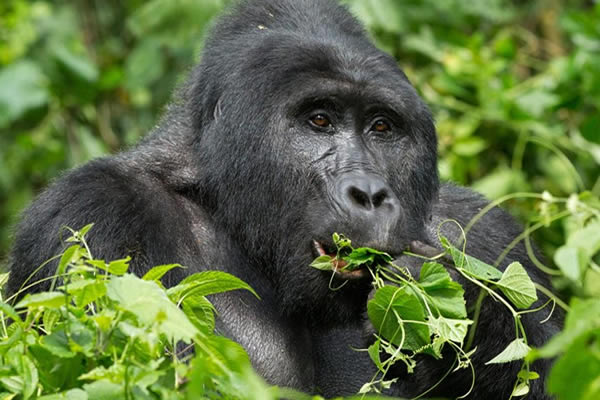 Trekking Experience: Gorilla trekking in Virunga can be more adventurous and rugged compared to Uganda and Rwanda. The park’s challenging terrain, combined with its remote location, provides a wild and authentic experience. Political instability in the region can affect accessibility, so it’s essential to check the security situation before planning a trip.
Trekking Experience: Gorilla trekking in Virunga can be more adventurous and rugged compared to Uganda and Rwanda. The park’s challenging terrain, combined with its remote location, provides a wild and authentic experience. Political instability in the region can affect accessibility, so it’s essential to check the security situation before planning a trip.
Additional Activities: Virunga offers unique activities such as climbing Mount Nyiragongo, an active volcano with the world’s largest lava lake. The Senkwekwe Center in Rumangabo provides care for orphaned gorillas, offering visitors a chance to learn about gorilla conservation efforts. Exploring the diverse wildlife and the stunning landscapes of the Rwenzori Mountains are also highlights.
- Kahuzi-Biega National Park
Location and Description: Kahuzi-Biega National Park is located in eastern DRC, near the town of Bukavu. The park covers 6,000 square kilometres and is named after its two extinct volcanoes, Mount Kahuzi and Mount Biega. It is a UNESCO World Heritage Site known for its population of eastern lowland gorillas (Grauer’s gorillas).
Gorilla Groups: Several habituated groups of eastern lowland gorillas are available for trekking.
Trekking Experience: Trekking in Kahuzi-Biega involves navigating through dense tropical forests and varied terrain. The experience is less strenuous than mountain gorilla trekking, but the remote location adds an element of adventure. The chance to see the larger Grauer’s gorillas, which are distinct from the mountain gorillas, provides a unique experience.
Additional Activities: Apart from gorilla trekking, visitors can hike the park’s extinct volcanoes, explore the diverse flora and fauna, and engage in bird watching. The park’s proximity to Lake Kivu allows for additional recreational activities such as boat trips and relaxation by the lake.
REPUBLIC OF CONGO (CONGO-BRAZZAVILLE)
- Odzala-Kokoua National Park
Location and Description: Odzala-Kokoua National Park is located in the northwest of the Republic of Congo. The park covers approximately 13,500 square kilometers and is part of the Congo Basin, one of the world’s largest tropical rainforests.
Gorilla Groups: The park is home to western lowland gorillas, with several habituated groups available for trekking.
Trekking Experience: Gorilla trekking in Odzala-Kokoua is a unique experience due to the park’s remote location and dense rainforest environment. Treks often involve following gorillas through thick underbrush and swampy areas, providing a raw and immersive encounter with these primates. The experience is generally more off-the-beaten-path compared to other gorilla trekking destinations.
Additional Activities: Odzala-Kokoua offers river tours, where visitors can explore the park’s waterways and observe wildlife such as forest elephants, buffaloes, and various bird species. The park’s bais (natural forest clearings) are excellent for wildlife viewing. Cultural experiences with local communities add depth to the visit.
CENTRAL AFRICAN REPUBLIC (CAR)
- Dzanga-Sangha Special Reserve
Location and Description: Dzanga-Sangha Special Reserve is located in the southwest of the Central African Republic and is part of the Sangha Trinational, a UNESCO World Heritage Site shared with Cameroon and the Republic of Congo. The reserve covers 4,589 square kilometers and is known for its dense rainforests and rich biodiversity.
Gorilla Groups: The reserve is home to western lowland gorillas, with several habituated groups available for trekking.
Trekking Experience: Gorilla trekking in Dzanga-Sangha involves traversing through dense rainforest and swampy areas. The reserve’s remote and less frequented nature provides an exclusive and intimate experience. The chance to see western lowland gorillas in their natural habitat, away from large tourist crowds, is a highlight.
Additional Activities: Dzanga-Sangha offers opportunities to observe forest elephants at the Dzanga Bai, a large forest clearing where elephants gather. Bird watching, tracking other wildlife such as bongos and sitatungas, and cultural interactions with local indigenous communities enhance the overall experience.
